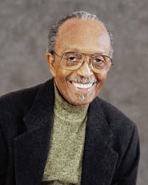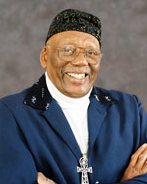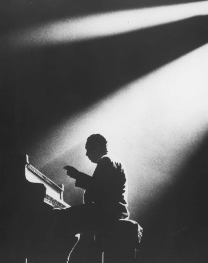Jazz: Searching for an Audience and a Vibe
What will it take for the next generation to embrace jazz? The Congressional Black Caucus and guest blogger Joann Stevens weigh in
/https://tf-cmsv2-smithsonianmag-media.s3.amazonaws.com/filer/20120925115024Mural_Thumbnail.jpg)
The dilemma of how to engage new audiences, especially the millennial generation, in the historical significance of America’s original art form, jazz, and how the music influences life and cultural creativity today was the focus of a recent Congressional Black Caucus forum entitled, “If You Really are Concerned: An African American Agenda for Jazz.”
The title is taken from a song composed by the late jazz pianist Billy Taylor following the assassination of Dr. Martin Luther King, Jr. But what a difference a few generations make; because as the panel of scholars and jazz artists—ranging in age from mid-20s to late-80s—discussed the topic, it became clear that very few of today’s youth would know Billy Taylor or his work, and even more disconcerting, might have a limited understanding of the story of Dr. King and his place in American history.
As a call to arms, jazz is seeking to replace its aging and dying fan base in a world very much unlike the one that birthed a music that expressed the turmoil of slavery and the hope of African American’s quest for black pride. And without a cultural context to emotionally connect the music and young fans today, jazz just isn’t appealing to millennials, say jazz performers and older fans.
“Music is a story,” said NEA Jazz Master and saxophonist Jimmy Heath. Out of the social progress programs like CETA (Comprehensive Employment and Training Act), jazz education initiatives emerged in the 1970s that took Heath and other jazz greats into elementary schools to teach youngsters civil rights history and to play music.

“We would go in and play ragtime, blues and bebop, all different kinds of music that lead to jazz,” said Heath. “Then we’d play something they knew, like the Sanford and Son theme song. They’d know that one and would respond to it.” Then the kids would learn that jazz artist Quincy Jones had composed the tune.
Heath said too often bebop artists, past and present, loved to play complex polyrhythms that youth can’t understand or connect with emotionally. “People don’t feel that,” he said of some of the more avant garde jazz. “Play what they like!”

A recent effort launched by the Jazz Arts Group of Columbus, Ohio, the Jazz Audience Initiative, is exploring youthful tastes about jazz music said Willard Jenkins, co-author of African Rhythms: The Autobiography of Randy Weston. Some lessons learned: Millennials don’t like to be captives at traditional concerts. They want to move and engage in conversations on social media like Twitter at concerts.
Youth also don’t categorize music in genres with the rigidity used by the music industry, said Jenkins.
“Duke Ellington, Max Roach, and Randy Weston have all said that jazz is an obsolete term,” said Jenkins, a view that many jazz artists have held since the music’s origins. “It is music, played by black people” to tell life stories, world cultural history, and “have a voice” to make a statement musically that society might not allow them to articulate socially, he said.
“If you don’t define who you are and what you’re doing someone else will,” said Heath’s son Mtume, an acclaimed producer, composer and performer. “Each generation brings its own signature to music and culture,” he said. “There’s been a shutdown of the creative impulse (in jazz),” facilitated by jazz curricula in music schools and expectations imposed by the music industry.
“Jazz (instruction) has been in schools twenty to thirty years,” said 26-year-old jazz pianist Gerald Clayton. “I think the way we teach this music, and have put it into these boxes and formulas can have a negative effect on the music.”
And that negativity can extend to the young fan base.

By the forum’s conclusion, panelists and audience members agreed on several takeaways: Jazz had to access the power of the Internet and technology to reach younger fans. The music needs to be embedded in youth culture like video games and apps. Also, if schools, churches, community venues like museums, and libraries didn’t make free jazz music and cultural history programs available to youth it might be unaffordable for some, and not appealing enough for to others to purchase.
Most importantly all felt that parents and family members played critical roles in introducing youth to live and recorded jazz.
“I personally see jazz as a road with lots of lanes,” said the 32-year-old jazz vocalist Lizz Wright.
/https://tf-cmsv2-smithsonianmag-media.s3.amazonaws.com/accounts/headshot/Joann_Stevens.jpeg)
/https://tf-cmsv2-smithsonianmag-media.s3.amazonaws.com/accounts/headshot/Joann_Stevens.jpeg)